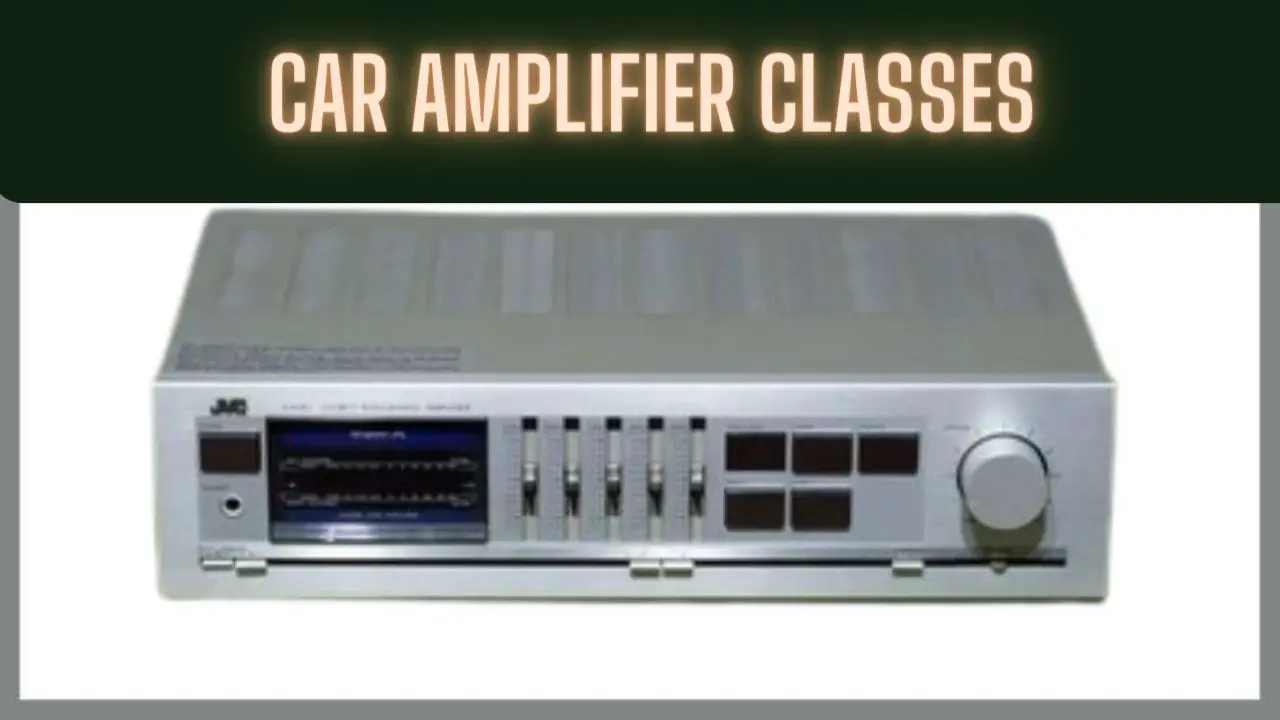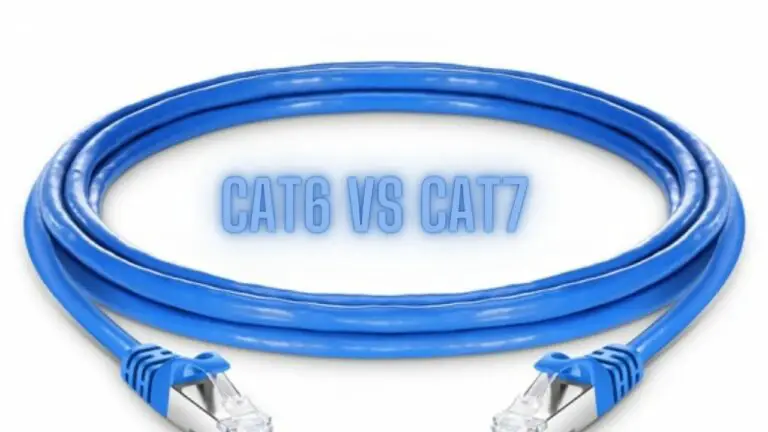Car Amplifier Classes: Exploring Different Amplifier Technologies
Introduction
Car amplifiers play a pivotal role in enhancing the audio experience within vehicles, delivering clear and powerful sound to speakers and subwoofers. When selecting a car amplifier, it’s important to understand the different amplifier classes available, as each class offers distinct characteristics and performance attributes. In this article, we’ll delve into the various amplifier classes commonly used in car audio systems, helping you make an informed decision when upgrading your vehicle’s sound system.
Amplifier Classes Explained:
Class A Amplifier:
When it comes to achieving premium audio quality in a car audio system, Class A car amplifiers stand out as a top choice. Known for their exceptional sound reproduction and attention to detail, Class A amplifiers offer audiophiles and enthusiasts a level of performance that can elevate the in-car listening experience to new heights. In this article, we’ll take an in-depth look at Class A car amplifiers, their operation, advantages, and considerations for incorporating them into your car audio setup.
Understanding Class A Amplifiers:
Operating Principle: Class A amplifiers are designed for uncompromising sound quality. They operate by continuously providing current to the output transistors, even when there is no audio signal present. This results in a nearly distortion-free signal and accurate sound reproduction, making them a popular choice for audiophiles who prioritize sonic purity.
Advantages of Class A Car Amplifiers:
1. Superior Sound Quality: Class A amplifiers are renowned for their exceptional sound quality. They produce minimal distortion, allowing for faithful and accurate reproduction of audio signals. This purity is particularly noticeable in the reproduction of intricate details and nuances in music.
2. Low Distortion: The continuous current flow in Class A amplifiers eliminates crossover distortion, resulting in cleaner audio output and a reduction in harmonic distortion. This contributes to a more natural and true-to-life sound.
3. Smooth and Linear Response: Class A amplifiers provide a smooth and linear response across the entire frequency range, ensuring that every note and tone is faithfully reproduced without coloration or alteration.
4. Musicality and Warmth: Class A amplifiers are often described as having a warm and musical character. They add a touch of richness to the audio that is pleasing to the ears, making them suitable for various genres of music.
Considerations and Challenges:
1. Inefficiency and Heat Generation: One of the primary drawbacks of Class A amplifiers is their inefficiency. They consume a significant amount of power and generate a substantial amount of heat, which can impact the vehicle’s electrical system and require additional cooling mechanisms.
2. Power Limitations: Due to their power-hungry nature, Class A amplifiers are typically lower in power output compared to other amplifier classes. This makes them suitable for driving midrange and high-frequency speakers rather than power-hungry subwoofers.
3. Space Requirements: Class A amplifiers often require larger heatsinks and chassis to dissipate the heat generated during operation. This can pose challenges in terms of space constraints in a vehicle.
4. Premium Pricing: Class A amplifiers are known for their high-quality components, advanced circuitry, and meticulous engineering. As a result, they tend to be more expensive compared to amplifiers of other classes.
Conclusion: Class A car amplifiers are a testament to uncompromising dedication to audio excellence. While they come with challenges such as power consumption and heat generation, their ability to faithfully reproduce music with unmatched purity and precision appeals to audiophiles and enthusiasts seeking the finest in-car audio experience. Incorporating a Class A amplifier into your car audio system can elevate your musical journey, allowing you to appreciate the subtleties and nuances of your favorite tracks like never before.
Class AB Amplifier:
In the realm of car audio amplifiers, the Class AB amplifier stands as a popular and versatile choice that strikes a balance between sound quality and efficiency. This amplifier class offers a compromise between the pristine sound reproduction of Class A amplifiers and the efficiency of Class B amplifiers. In this article, we’ll delve into the workings, benefits, and applications of Class AB amplifiers in car audio systems.
An Overview of Class AB Amplifiers:
Operating Principle: Class AB amplifiers are designed to combine the best attributes of both Class A and Class B amplifiers. They employ a dual-transistor output stage, where one transistor handles the positive half of the audio signal and the other handles the negative half. This allows for efficient power usage while reducing distortion and crossover issues.
Balancing Efficiency and Sound Quality:
1. Improved Efficiency: Compared to Class A amplifiers, Class AB amplifiers are more efficient. They reduce power consumption and heat generation by only drawing current when there is an audio signal present. This makes them more suitable for car audio systems, where limited power availability is a consideration.
2. Reduced Distortion: Class AB amplifiers mitigate the crossover distortion found in pure Class B amplifiers. By using both positive and negative transistors, they ensure that there is a small overlap in current flow around the zero crossing point of the audio signal. This eliminates the dead zone and reduces distortion.
3. Enhanced Sound Quality: The reduction in distortion and crossover issues results in better sound quality compared to Class B amplifiers. While not quite as pristine as Class A amplifiers, Class AB amplifiers deliver accurate and detailed sound reproduction that is well-suited for car audio enthusiasts.
4. Lower Heat Generation: Class AB amplifiers generate less heat than Class A amplifiers since they only draw current when needed. This makes them more suitable for car audio installations, where space and cooling options are limited.
Applications of Class AB Amplifiers:
1. Car Audio Systems: Class AB amplifiers are widely used in car audio systems due to their balanced performance and efficient power usage. They can power a variety of speakers, including midrange and tweeters, delivering clear and detailed sound in vehicles.
2. Home Audio Systems: Class AB amplifiers are also found in home audio setups. They are used to power speakers, bookshelf speakers, and small audio systems where a compromise between efficiency and sound quality is desired.
3. Professional Audio: Class AB amplifiers find applications in professional audio setups, such as sound reinforcement systems, where the demand for reliable and high-quality amplification is essential.
4. Studio Monitors: In the realm of recording studios, Class AB amplifiers are used to power studio monitors that provide accurate and precise sound reproduction for audio engineers and producers.
Conclusion: Class AB amplifiers offer a compelling combination of sound quality and efficiency, making them a popular choice in car audio systems and other applications. Their ability to strike a balance between the performance attributes of Class A and Class B amplifiers positions them as versatile solutions for audiophiles and enthusiasts seeking accurate sound reproduction while maximizing power efficiency. Whether in a car, home, or professional audio setting, Class AB amplifiers continue to play a significant role in delivering high-quality audio experiences.
Class D Amplifier:
In the dynamic world of car audio, Class D amplifiers have revolutionized the way power is harnessed and delivered to speakers and subwoofers. Known for their remarkable efficiency and ability to produce substantial power in a compact form factor, Class D amplifiers have become a staple in modern car audio systems. In this article, we’ll explore the inner workings, advantages, and applications of Class D amplifiers, shedding light on their role in enhancing the in-car audio experience.
Demystifying Class D Amplifiers:
Operating Principle: Class D amplifiers, also referred to as switching amplifiers, employ a distinct operational approach that sets them apart from other amplifier classes. Instead of continuously amplifying the audio signal, Class D amplifiers rapidly switch the output transistors on and off at a high frequency. This switching generates a pulse-width modulated (PWM) signal, which is then filtered to create the amplified audio signal.
Advantages of Class D Amplifiers:
1. High Efficiency: Class D amplifiers are renowned for their exceptional efficiency, often surpassing 90% or more. This efficiency means they draw less power from the vehicle’s electrical system, producing less heat and placing less strain on the electrical components.
2. Compact Size: The switching nature of Class D amplifiers allows them to be designed with smaller and lighter components. As a result, they are often more compact and easier to install in vehicles with limited space.
3. Power for Subwoofers: Class D amplifiers are particularly well-suited for powering subwoofers, which require high power levels. Their efficiency and ability to handle low-frequency signals make them an ideal choice for delivering powerful bass.
4. Reduced Heat Generation: The switching operation of Class D amplifiers results in minimal heat generation, contributing to their efficiency and allowing for prolonged operation without overheating issues.
5. Lower Power Consumption: Due to their high efficiency, Class D amplifiers consume less power from the vehicle’s battery, contributing to improved fuel efficiency and reduced strain on the electrical system.
Applications of Class D Amplifiers:
1. Subwoofer Amplification: Class D amplifiers excel at driving subwoofers, delivering the high power levels needed for impactful bass reproduction in car audio systems.
2. Multi-Channel Systems: Class D amplifiers are used in multi-channel audio systems, where they can power a combination of speakers and subwoofers while maintaining efficiency.
3. Factory Audio Upgrades: Class D amplifiers are commonly used in factory audio system upgrades, where they provide improved power and sound quality without excessive power draw.
4. Custom Audio Installations: Enthusiasts and car audio professionals often use Class D amplifiers in custom installations to create high-power audio setups with efficient power usage.
5. Marine and Powersports Audio: The compact size and efficiency of Class D amplifiers make them suitable for marine and powersports audio installations, where space and power resources may be limited.
Conclusion: Class D amplifiers have emerged as a game-changer in the world of car audio, delivering powerful performance with exceptional efficiency. Their ability to efficiently generate high power levels while maintaining a compact footprint has led to their widespread adoption in various audio applications. From powering subwoofers to enhancing factory audio systems, Class D amplifiers continue to shape the way we experience sound within vehicles, providing enthusiasts and audiophiles with the best of both worlds – power and efficiency.
Class G Amplifier:
In the realm of audio amplification, Class G amplifiers stand as a solution that bridges the gap between efficiency and sound quality. Combining elements from both Class AB and Class H amplifiers, Class G amplifiers dynamically adjust their power supply voltage to optimize energy usage and minimize distortion. In this article, we’ll delve into the workings, benefits, and applications of Class G amplifiers, shedding light on their role in delivering enhanced audio experiences.
Understanding Class G Amplifiers:
Operating Principle: Class G amplifiers are designed to improve the efficiency of Class AB amplifiers by utilizing multiple power supply voltage levels. They automatically switch between different voltage levels based on the amplitude of the audio signal. This enables the amplifier to operate more efficiently during periods of lower output, while still having the capability to deliver higher power when needed.
Advantages of Class G Amplifiers:
1. Enhanced Efficiency: Class G amplifiers offer higher efficiency compared to traditional Class AB amplifiers, especially at lower output levels. By utilizing lower supply voltages during quieter passages, they minimize power consumption and heat generation.
2. Reduced Distortion: The dynamic voltage switching of Class G amplifiers contributes to reduced distortion, as the amplifier operates closer to its ideal voltage range most of the time. This results in cleaner and more accurate sound reproduction.
3. Improved Sound Quality: With reduced distortion and enhanced efficiency, Class G amplifiers offer improved sound quality compared to traditional Class AB designs. They maintain higher fidelity across different audio levels.
4. Lower Heat Generation: Efficiency improvements lead to lower heat generation, allowing Class G amplifiers to operate cooler and more efficiently. This can result in longer operational lifespans and better overall performance.
Applications of Class G Amplifiers:
1. Car Audio Systems: Class G amplifiers are commonly used in car audio systems, providing efficient power to a range of speakers and subwoofers. They are especially well-suited for applications where space and power efficiency are important considerations.
2. Home Audio Systems: Class G amplifiers can also find applications in home audio setups, powering speakers and other audio components while ensuring energy-efficient operation.
3. Professional Audio: In the professional audio world, Class G amplifiers can be employed for sound reinforcement systems, amplifying live performances, and powering loudspeakers.
4. PA Systems: Public address systems and venue sound systems can benefit from the efficiency and enhanced sound quality offered by Class G amplifiers.
5. Stage Monitors: Class G amplifiers can be used to power stage monitors, delivering accurate sound to performers on stage.
Conclusion: Class G amplifiers offer a compelling solution for those seeking to balance efficiency and audio performance in their amplification systems. By dynamically adjusting power supply voltages based on the audio signal, these amplifiers achieve improved energy efficiency while delivering clear and accurate sound reproduction. Whether in car audio systems, home setups, or professional audio applications, Class G amplifiers contribute to a more efficient and enjoyable audio experience.
Class H Amplifier:
In the ever-evolving landscape of audio amplification, Class H amplifiers represent a sophisticated solution that optimizes both efficiency and power delivery. By dynamically adjusting the power supply voltage based on the audio signal’s amplitude, Class H amplifiers offer improved efficiency and reduced heat generation while maintaining high-quality sound reproduction. In this article, we’ll dive into the mechanics, advantages, and applications of Class H amplifiers, shedding light on their role in advancing audio experiences.
Understanding Class H Amplifiers:
Operational Concept: Class H amplifiers take the efficiency optimization of Class G amplifiers to the next level. They utilize multiple power supply voltage levels that are dynamically switched based on the audio signal’s requirements. This ensures that the amplifier operates at the lowest necessary voltage to maintain sound quality, minimizing energy waste and heat generation.
Advantages of Class H Amplifiers:
1. Enhanced Efficiency: Class H amplifiers achieve remarkable efficiency by closely matching the required power supply voltage to the audio signal’s amplitude. This results in reduced energy consumption and heat dissipation compared to traditional Class AB amplifiers.
2. Reduced Distortion: By providing precise power supply voltage levels, Class H amplifiers minimize distortion and crossover issues that can affect sound quality in other amplifier classes. This translates to clearer and more accurate audio reproduction.
3. Improved Thermal Management: Efficiency improvements directly impact heat generation. Class H amplifiers generate less heat due to their optimized power supply operation, resulting in improved thermal management and potentially extending the amplifier’s operational lifespan.
4. Dynamic Power Delivery: Class H amplifiers offer dynamic power delivery by adapting the power supply voltage to match the audio signal’s demands. This ensures that ample power is available when needed, while conserving energy during quieter passages.
Applications of Class H Amplifiers:
1. Pro Audio Systems: Class H amplifiers are well-suited for professional audio applications, including live sound reinforcement, concerts, and venue installations. They deliver efficient and high-quality amplification to loudspeakers and monitor systems.
2. PA Systems: Public address systems and announcements benefit from the efficiency and clear sound reproduction provided by Class H amplifiers.
3. Concert and Event Sound: Class H amplifiers are valuable tools for powering large-scale sound setups at concerts, festivals, and events, where energy efficiency and power dynamics are crucial.
4. Recording Studios: In the studio environment, Class H amplifiers can be used to power studio monitors and reference speakers, ensuring accurate and uncolored audio monitoring.
5. Home Theater Systems: Class H amplifiers find applications in high-end home theater systems, contributing to improved audio quality and efficient power usage.
Conclusion: Class H amplifiers stand as a testament to the pursuit of efficiency and performance optimization in audio amplification. By dynamically adjusting power supply voltage levels based on the audio signal’s requirements, these amplifiers provide efficient power delivery while maintaining high-quality sound reproduction. Whether in professional audio environments, large-scale events, or home theater setups, Class H amplifiers contribute to a refined and engaging audio experience that combines the best of efficiency and sonic excellence.
Class T (Tripath) Amplifier:
In the ever-evolving landscape of audio amplification, Class T amplifiers, also known as Tripath amplifiers, emerge as a unique and innovative solution that marries the precision of digital technology with the purity of audio fidelity. Renowned for their compact size, efficiency, and high-quality sound reproduction, Class T amplifiers offer audiophiles and enthusiasts a refreshing approach to amplification. In this article, we’ll explore the inner workings, benefits, and applications of Class T amplifiers, shedding light on their role in shaping modern audio experiences.
Understanding Class T (Tripath) Amplifiers:
Digital Power Processing: Class T amplifiers utilize a digital power processing technology developed by Tripath Technology Inc., a semiconductor company that specialized in audio amplification. Unlike traditional analog amplifiers, Class T amplifiers convert the audio signal into a digital pulse-width modulated (PWM) signal, which is then amplified and filtered to recreate the analog audio signal.
Advantages of Class T Amplifiers:
1. Compact Size: Class T amplifiers are known for their compact size and efficiency. The digital nature of the amplification process allows for more efficient use of space and components, making them ideal for applications with limited space.
2. Energy Efficiency: Due to their digital switching operation, Class T amplifiers are highly efficient and draw less power from the electrical source compared to traditional analog amplifiers. This efficiency contributes to reduced power consumption and heat generation.
3. Accurate Sound Reproduction: Class T amplifiers benefit from the precision of digital signal processing, resulting in accurate and detailed sound reproduction. The digital-to-analog conversion process helps minimize distortion and artifacts.
4. Wide Frequency Response: Class T amplifiers offer a wide frequency response, making them suitable for amplifying a range of audio signals, from delicate highs to powerful lows.
5. Low Distortion: The digital nature of Class T amplifiers helps reduce distortion and harmonic artifacts, contributing to a cleaner and more faithful sound reproduction.
Applications of Class T Amplifiers:
1. Portable Audio Devices: Class T amplifiers are commonly used in portable audio devices, such as portable speakers and headphones, due to their compact size, energy efficiency, and ability to deliver high-quality audio.
2. Home Audio Systems: Class T amplifiers can be integrated into home audio systems, powering bookshelf speakers and compact audio setups with efficiency and accuracy.
3. Car Audio Systems: Class T amplifiers find applications in car audio systems, providing efficient and compact amplification for various speakers and components.
4. Computer Speakers: Many computer speaker systems utilize Class T amplifiers to provide clear audio in a compact form factor.
5. High-End Audio: In the realm of high-end audio, Class T amplifiers can be employed to power high-fidelity speakers, providing accurate and detailed sound reproduction.
Conclusion: Class T amplifiers, born from the digital era, bring a fresh perspective to audio amplification by merging digital precision with audio fidelity. Their compact size, efficiency, and accurate sound reproduction make them a valuable choice for a wide range of applications, from portable devices to home audio systems. As technology continues to advance, Class T amplifiers stand as a testament to the possibilities of innovation in amplification, offering enthusiasts and audiophiles an opportunity to experience high-quality audio in a modern and efficient form.
Car Amplifier Classes FAQS
What are car amplifier classes?
Car amplifier classes refer to different types or categories of amplifiers based on their circuit design, operational principles, and performance characteristics. Each class has distinct features that affect factors like efficiency, sound quality, power consumption, and heat generation.
How many main classes of car amplifiers are there?
There are several main classes of car amplifiers, including Class A, Class AB, Class D, Class G, and Class H. Additionally, there are advanced variations like Class T (Tripath) amplifiers that incorporate digital technology.
What is the difference between Class A and Class AB amplifiers?
Class A amplifiers operate by supplying a continuous current to the output transistors, even when no audio signal is present. Class AB amplifiers are an improvement over Class A, as they use dual transistors to handle positive and negative halves of the audio signal. This reduces power consumption and heat generation, improving efficiency.
How do Class D amplifiers work?
Class D amplifiers utilize a switching operation. They rapidly switch the output transistors on and off at a high frequency to generate a pulse-width modulated (PWM) signal. This signal is then filtered to create the amplified audio output. Class D amplifiers are known for their high efficiency and are commonly used to power subwoofers.
What are the benefits of Class G and Class H amplifiers?
Both Class G and Class H amplifiers are designed to improve efficiency over traditional Class AB amplifiers. They dynamically adjust the power supply voltage based on the audio signal level. Class G amplifiers switch between multiple voltage levels, while Class H amplifiers adjust voltage levels smoothly. These variations minimize power consumption and heat generation, enhancing efficiency.
What are the advantages of Class D amplifiers in cars?
Class D amplifiers are known for their high efficiency and compact size. They draw less power from the vehicle’s electrical system, produce less heat, and are ideal for powering subwoofers and speakers. Their efficiency benefits also contribute to improved fuel efficiency in the vehicle.
Are Class D amplifiers suitable for high-quality audio?
Yes, Class D amplifiers have evolved to offer high-quality audio reproduction. Modern Class D designs incorporate advanced digital processing and filtering to minimize distortion and maintain accurate sound reproduction, making them suitable for various audio applications.
Can I mix different amplifier classes in my car audio system?
Yes, you can mix different amplifier classes in your car audio system, depending on your specific audio requirements. For example, you could use a Class D amplifier to power subwoofers and a Class AB amplifier for midrange and high-frequency speakers. However, it’s important to ensure proper compatibility and integration for optimal performance.
Which amplifier class is best for my car audio setup?
The choice of amplifier class depends on your priorities, such as sound quality, efficiency, power requirements, and available space. For overall efficiency and versatility, Class D amplifiers are popular. If you prioritize sound quality and have the means for cooling and power, Class AB amplifiers might be suitable. Classes G and H are ideal for those seeking efficiency improvements over Class AB.
Are there any new amplifier classes emerging?
While the main amplifier classes remain consistent, advancements in technology continue to refine existing classes and may lead to hybrid or innovative variations. Keep an eye on developments in the audio industry for potential new amplifier class introductions.
Conclusion:
When selecting a car amplifier, understanding the different amplifier classes is essential to choose the one that best matches your audio preferences, available space, and power requirements. Each amplifier class has its own set of advantages and disadvantages, so it’s important to consider factors such as sound quality, efficiency, heat generation, and compatibility with your car audio setup. By exploring the various amplifier classes and their features, you can make an informed decision to achieve the optimal audio experience in your vehicle.







